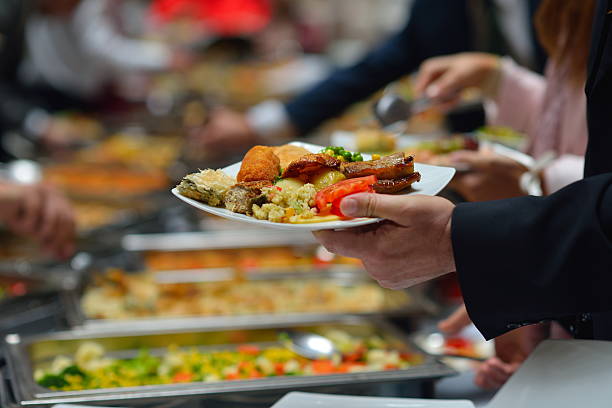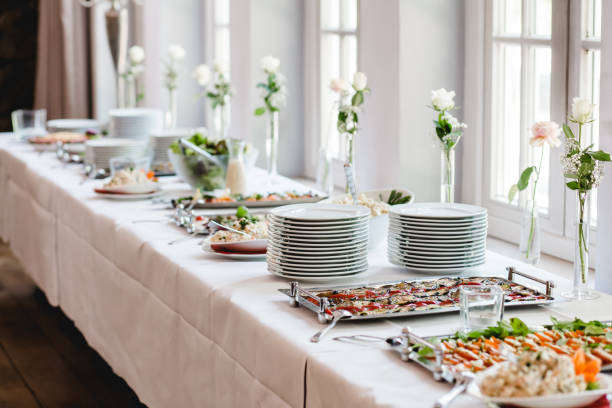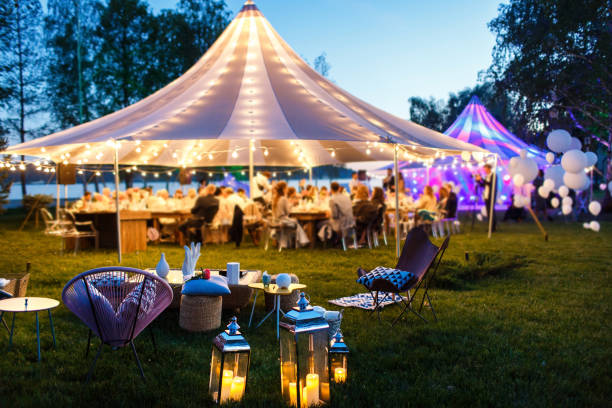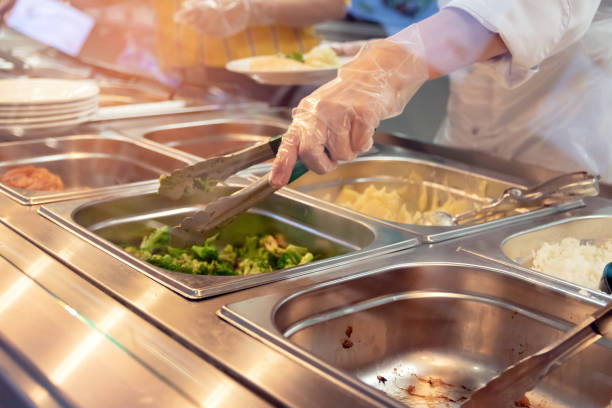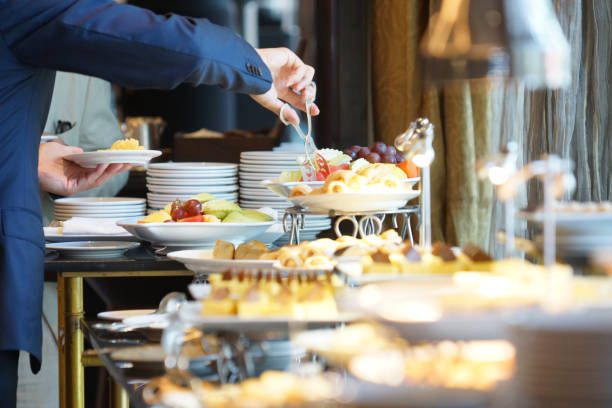What Full Service Means When Hiring a Catering Company Washington DC for Your Event
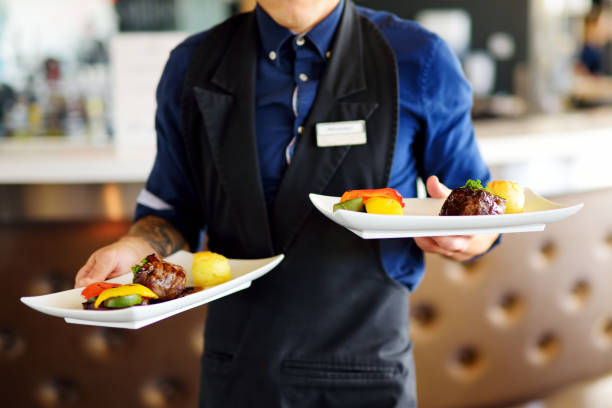
Planning an event, whether personal or corporate, often involves countless details. One of the most critical aspects is ensuring your guests are well-fed and satisfied. This is where full-service catering comes into play. But what exactly does “full-service catering” mean, and why is it crucial for a successful event?
What Is Full-Service Catering?
Full-service catering goes beyond simply providing food for your event. It’s a comprehensive service that takes care of every detail related to dining, from menu planning to presentation and even cleanup. A full-service caterer ensures you can focus on your event while they expertly handle all things food-related.
Key elements of full-service catering include:
– Menu Customization: Tailored menus designed to meet dietary preferences, themes, or specific requests.
– On-Site Catering Staff: Professional chefs, servers, bartenders, and coordinators ensure smooth meal service from start to finish.
– Equipment and Rentals: Provision of tables, chairs, linens, glassware, cutlery, serving dishes, and more as needed for your event setup.
– Setup and Cleanup: The team manages everything from arranging dining areas before the event to cleaning up afterward.
Why Full-Service Catering Matters
When organizing an event—whether it’s a wedding reception or a corporate gathering—attention to detail can make or break the experience for your guests.
- Stress-Free Planning
A professional team takes the burden off your shoulders by managing all aspects of food service logistics. From fine-tuning menus to executing flawless service on the day of the event, their expertise allows you to focus on other priorities. - Consistency in Quality
Full-service caterers maintain high standards in food preparation and presentation—ensuring that every guest experiences consistent flavors and visual appeal with each dish. - Professional Execution
The presence of trained staff ensures impeccable timing when serving meals or drinks while maintaining professionalism throughout the event. - Customization Options
Whether you want themed cuisine or accommodations for allergies/dietary restrictions (e. g. , gluten-free or vegan options), full-service caterers deliver tailored solutions fitting any requirements. - Comprehensive Support Throughout Your Event
Beyond just delivering food items at specified times—full support includes troubleshooting last-minute issues like seating adjustments or menu modifications if needed.
When Should You Choose Full-Service Catering?
| Event Type | Reason to Use Full-Service Catering |
| Weddings | Multiple courses served professionally; elegant setup |
| Corporate Events | Impress clients/employees with gourmet dining |
| Fundraisers | Enhance attendee experience; boost participation rate |
| Private Parties | Effortless hosting without sacrificing quality |
For smaller casual gatherings (e. g. , backyard barbeques), partial services might suffice—but any high-stakes occasion needs full-scale support from experienced caterers.
Hiring a full-service caterer isn’t just about convenience; it’s an investment in creating memorable moments for everyone at your special occasion through superior culinary experiences paired with seamless delivery processes you’re proud of.
Discover the Top Benefits of Washington DC Catering for Your Next Event
When planning any event, food is undeniably one of the most critical elements. Whether it’s a wedding, corporate gathering, birthday celebration, or another special occasion, the quality and presentation of food can make or break the overall experience for your guests. Hiring a full-service caterer ensures that every detail related to food is taken care of professionally, allowing you to focus on other important aspects. Let’s explore some of the key benefits of opting for a full-service caterer.
Effortless Wedding Catering Washington DC for Your Special Day
One of the biggest advantages of hiring a full-service caterer is the significant reduction in stress during event planning. Full-service catering involves much more than just preparing and serving food.
– Menu planning and customization
– Ingredient sourcing and preparation
– Setting up dining areas with proper tableware and decor
– Serving food with experienced staff
– Cleanup after the event
This comprehensive approach leaves you with one less thing to worry about while ensuring your guests have an enjoyable experience.
Customized Menus for Corporate Catering Washington DC
Full-service caterers are skilled at tailoring menus to suit your preferences, dietary requirements, and event theme.
– Creative appetizers that set the tone for your event
– Entrées that offer variety while catering to dietary restrictions (vegan, gluten-free, kosher options)
– Elegant desserts that leave a lasting impression on guests
Their knowledge ensures that every dish complements each other while aligning with your guests’ expectations.
Expert Food Delivery Washington DC Services
Food presentation plays a crucial role in any successful event. Full-service caterers excel at delivering visually appealing dishes accompanied by sophisticated table setups.
– Stylish plating techniques to enhance visual appeal
– Customized table decorations matching your theme or color scheme
– Uniformed staff providing polished service throughout the event
These details elevate an ordinary meal into an extraordinary dining experience.
Time and Cost Efficiency
While it might seem like handling catering yourself could save money, it often leads to unpredicted expenses and time-consuming tasks. Professional caterers leverage their established vendor relationships to source high-quality ingredients efficiently.
– They minimize waste by accurately estimating portion sizes based on guest count.
– Their streamlined processes save time on cooking, setup, and cleanup activities.
Hiring experts allows you to enjoy better value for your investment.
Seamless Guest Experience
A full-service caterer ensures that all aspects of food service run smoothly from start to finish. Their well-trained staff provides attentive service by promptly addressing guest needs such as refilling drinks or resolving dietary concerns discreetly. This attention fosters a warm atmosphere where attendees feel cared for throughout the event.
Comparison Table: DIY Catering vs Full-Service Catering
| Feature | DIY Catering | Full-Service Catering |
| Time Required | High | Low |
| Food Quality | Depends on personal skill | Professionally curated |
| Presentation | Basic | Polished and elegant |
| Stress Level | Elevated | Reduced |
| Clean-Up Responsibility | Host handles everything | Handled by catering team |
Opting for full-service catering simplifies logistics while elevating guest satisfaction—a worthy investment for creating memorable events without unnecessary hassle.
Top Benefits of Hiring a Full-Service Caterer for Your Next Event
Organizing an event, whether it’s personal or corporate, comes with numerous responsibilities. From planning the menu to ensuring flawless service during the event, managing every detail can be overwhelming. This is where hiring a full-service caterer can make all the difference. Below are some of the key benefits that demonstrate why full-service catering is essential for a successful and stress-free event experience.
Professional Expertise and Experience
Full-service caterers bring years of experience in managing events with precision.
- Menu Planning: They provide tailored menu options to suit your event theme, dietary restrictions, and guest preferences.
- Event Execution: From setup to cleanup, they manage every stage seamlessly.
- Food Quality: Dishes are prepared by skilled chefs using high-quality ingredients for exceptional taste and presentation.
With professionals handling these aspects, you can focus on enjoying your event rather than worrying about logistics.
Time-Saving Convenience
Planning an event takes significant time and effort.
- Vendor coordination (e. g. , rentals for tables, chairs, linens).
- Staffing needs such as waitstaff and bartenders.
- Efficient food preparation and timely delivery.
By outsourcing these tasks to experts, you can allocate your time toward engaging with guests or other high-priority aspects of your event.
Variety in Menu Options
| Type of Cuisine | Example Dishes | Ideal For |
| Classic Comfort Foods | Baked lasagna, roasted chicken | Family gatherings or casual events |
| International Flavors | Sushi platters, Mediterranean spreads | Cultural events or themed parties |
| Gourmet Creations | Filet mignon with truffle sauce | High-end weddings or galas |
This level of customization ensures there is something for everyone at your event.
Stress-Free Service Management
Catering teams don’t just handle food; they also oversee the service process during the event.
- Setting up food stations or plated dining layouts.
- Coordinating serving times in line with your schedule.
- Ensuring prompt refills at buffet spreads or drink stations.
- Cleaning up efficiently after the event concludes.
Their hands-on approach eliminates stress and allows you to enjoy yourself without interruptions.
Enhanced Guest Experience
The goal of any successful event is to leave guests satisfied and impressed.
- Delicious meals presented elegantly.
- Polished staff who provide attentive hospitality.
- A seamless flow between courses or food service styles (e. g. , buffet vs sit-down).
These elements collectively create a positive impression that guests will remember long after the event ends.
- They offer comprehensive packages that include rentals, staff services, etc.
- Their professional portion control minimizes food wastage.
- They come equipped with all necessary supplies (e. g. , serving utensils), saving you from purchasing extras unnecessarily.
With these advantages considered together, hiring a full-service caterer becomes an investment in both quality and convenience for any type of gathering you’re hosting.
6 Reasons Why Catering is Essential to Successful Corporate Event Planning
Planning a corporate event involves numerous details, from selecting the right venue to organizing a seamless agenda. Among these, catering plays an indispensable role in ensuring the success of your event. Below are six reasons why catering is a critical component of corporate event planning.
A well-executed catering service reflects positively on your company’s image. High-quality food and attentive service demonstrate professionalism and attention to detail, leaving a lasting impression on your attendees. This is especially important when hosting key stakeholders, clients, or partners.
- Consistency:Professional caterers ensure that the food presentation aligns with the tone and branding of your event.
- Customization:Many full-service caterers offer tailored menus that resonate with your company’s values or theme.
Food is often one of the most memorable parts of any event. Providing exceptional catering ensures that guests feel valued and appreciated throughout the occasion.
- Wide menu options to suit diverse dietary preferences (vegetarian, vegan, gluten-free).
- Efficient service staff keep attendees comfortable and engaged by managing all food-related logistics.
- Opportunities for networking over food stations or coffee breaks foster stronger connections between guests.
Managing catering logistics internally can be time-intensive and overwhelming for event planners who already have numerous responsibilities. Hiring a dedicated catering team allows you to focus on other important aspects of planning while leaving the dining experience to professionals.
Common Time-Saving Benefits:
| Task Handled by Caterer | Typical Organizer Headache Avoided |
| Menu planning | Researching recipes or sourcing ingredients |
| Food preparation | Coordinating kitchen setup |
| Serving staff coordination | Managing on-the-day labor schedules |
Events offering an enticing dining experience are more likely to attract higher attendance rates than those without proper refreshments or meals. A thoughtfully curated menu can be a draw for attendees who anticipate enjoying quality food alongside professional engagement opportunities during corporate events.
Tips for maximizing attendance:
– Include high-quality catered meals in promotional materials ahead of registration deadlines. – Offer unique culinary experiences such as themed buffets or live cooking stations.
Corporate events are designed not only for information-sharing but also for fostering professional relationships among attendees. Catering creates natural opportunities for interaction through shared meals, coffee breaks, or cocktail hours.
- Interactive setup ideas:Consider interactive elements like make-your-own salad bars or dessert tables where participants can engage with each other while enjoying personalized dining experiences.
- Strategic layout:Place refreshment areas in central locations to encourage mingling between sessions.
Modern corporate events host diverse groups of individuals with varying cultural backgrounds and dietary requirements. Ensuring everyone has access to suitable food options leaves all attendees feeling included and respected—a key factor in delivering an inclusive experience.
Examples of Specialized Menus:
| Requirement | Example Dishes Offered |
| Vegan | Grilled vegetable wraps; quinoa bowls |
| Gluten-Free | Zucchini noodles; roasted chicken salads |
| Kosher/Halal | Certified meats; specific preparation methods |
By partnering with experienced caterers who specialize in accommodating dietary needs, you avoid missteps that could alienate certain guests or create awkward moments during meal services.
Catering serves as more than just sustenance at corporate events—it shapes attendee perception, enhances collaboration opportunities, minimizes logistical challenges for organizers, supports inclusivity efforts through tailored offerings while ultimately contributing significantly toward setting the tone overall professionalism required successful execution business gatherings
Washington DC caterers Deliver Gourmet Office Catering Solutions for Every Occasion
A well-catered office environment can significantly impact employee satisfaction, productivity, and overall workplace morale. In today’s fast-paced corporate world, gourmet office catering solutions have become more than just a convenience—they are an essential part of creating a positive work culture. Whether you’re hosting an important client meeting in the boardroom or treating your team to snacks in the break room, gourmet catering can elevate the experience. Here’s how it works and why it matters.
The Importance of Gourmet Office Catering
Gourmet office catering offers more than just food; it creates an atmosphere of professionalism and care.
- Boosts Employee Engagement: Providing high-quality meals shows employees they are valued. This can lead to improved morale and increased loyalty.
- Enhances Professional Image: Offering gourmet options during boardroom meetings or client presentations leaves a lasting impression.
- Saves Time and Increases Productivity: Employees don’t need to leave the office for meals, allowing them more time to focus on their work.
Tailoring Gourmet Menus for Different Needs
Every workplace is unique, and so are its culinary needs. Gourmet caterers often offer customizable menus that cater to diverse dietary preferences and occasions.
Examples of Common Menu Options:
| Occasion | Example Menu Items |
| Client Meetings | Charcuterie boards, artisan sandwiches, fresh salads |
| Break Room Snacks | Assorted pastries, fruit platters, trail mixes |
| Weekly Lunches | International cuisine buffets, build-your-own bowls |
| Team Building Events | BBQ spreads, taco bars, gourmet sliders |
Customizable options allow employees with dietary restrictions (e. g. , vegetarian, gluten-free) to enjoy meals without compromise.
Key Features of Effective Office Catering
- Menu Variety: A wide selection ensures there’s something for everyone.
- On-Time Delivery: Punctual service is critical in maintaining schedules during busy workdays.
- Professional Presentation: Meals should be plated elegantly or arranged neatly for self-service.
- Sustainability Practices: Many modern caterers focus on eco-friendly packaging and locally sourced ingredients.
Boardrooms
When hosting executives or clients in the boardroom, every detail matters—right down to the food served. Gourmet catering enhances professionalism with thoughtfully curated menus that complement high-stakes discussions.
Break Rooms
Break rooms serve as casual spaces where employees recharge between tasks. Offering healthy yet indulgent snack options fosters relaxation while maintaining energy levels throughout the day.
Final Thoughts
Gourmet office catering bridges the gap between practicality and indulgence within professional environments. It not only fulfills nutritional needs but also reinforces workplace culture by prioritizing quality experiences for employees and stakeholders alike. By choosing tailored catering solutions for both formal boardrooms and informal break rooms alike, businesses demonstrate their commitment to excellence across all aspects of operation.
- How to Choose the Right Wedding Catering Washington DC Service for a Memorable Experience
- What Full Service Means When Hiring a Catering Company Washington DC for Your Event
- 10 Essential Insider Tips for Choosing the Perfect Washington DC Caterers
- Exploring the Services Offered by Washington DC Caterers for Corporate Events
- Choosing the Perfect Wedding Catering Washington DC
- Tips for Success: Best Practices from Washington DC Caterers
- Buffet vs Washington DC Catering: Understanding Key Differences and How to Choose the Right Option
- Why Washington DC Caterers Are Revolutionizing Corporate Catering in the Business World
